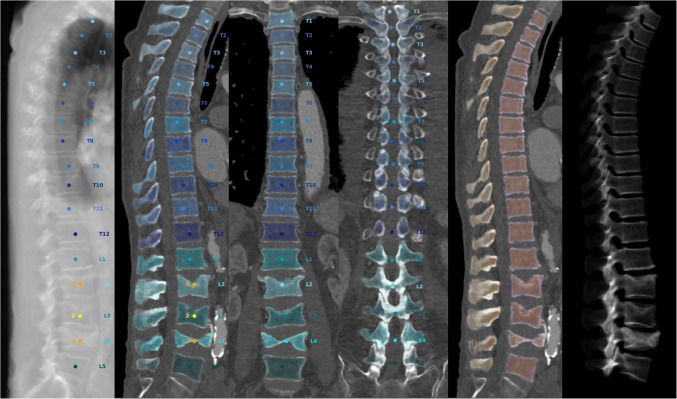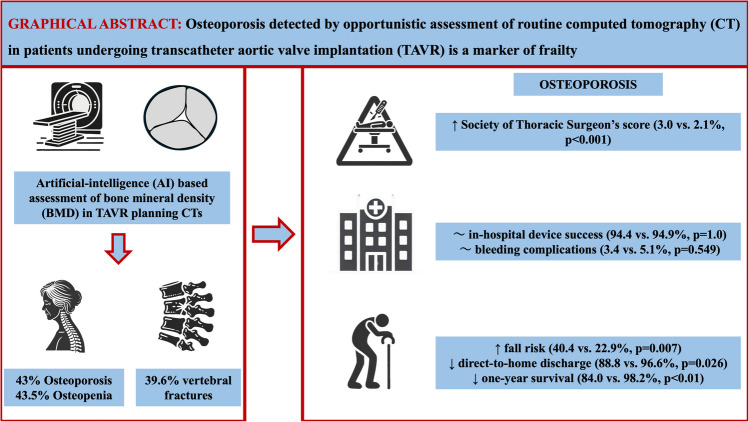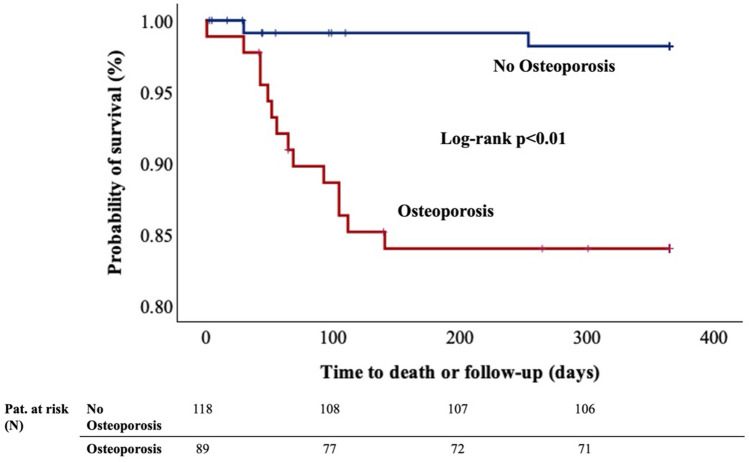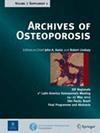Opportunistic computed tomography (CT) assessment of osteoporosis in patients undergoing transcatheter aortic valve replacement (TAVR)
IF 2.8
3区 医学
Q2 ENDOCRINOLOGY & METABOLISM
引用次数: 0



经导管主动脉瓣置换术(TAVR)患者骨质疏松的机会性计算机断层扫描(CT)评估。
利用人工智能进行基于CT的机会性筛查发现,在计划经导管主动脉瓣置换术时获得的CT扫描中骨质疏松症的患病率很高(43%)。因此,机会性筛查可能是评估高危人群骨质疏松症的一种经济有效的方法。背景:骨质疏松症是一种与骨折和虚弱相关的未被诊断的疾病,但可以在常规计算机断层扫描(CT)中检测到。方法:采用基于人工智能(AI)的算法对207例经导管主动脉瓣置换术(TAVR)患者的临床常规胸腹CT扫描测量体积骨密度(vBMD)。结果:43%的患者有骨质疏松症(vBMD 3 L1-L3),且为老年人(83.0{四分位数间距[IQR]: 78.0-85.5} vs. 79.0{四分位数间距[IQR]: 71.8-84.0}年,p 3, p 3, p 0.05)。结论:应用基于人工智能的算法对TAVR计划CT扫描可显示高达43%的患者患有骨质疏松症。骨质疏松症可能是与TAVR患者虚弱和预后恶化相关的标志物。
本文章由计算机程序翻译,如有差异,请以英文原文为准。
求助全文
约1分钟内获得全文
求助全文
来源期刊

Archives of Osteoporosis
ENDOCRINOLOGY & METABOLISMORTHOPEDICS -ORTHOPEDICS
CiteScore
5.50
自引率
10.00%
发文量
133
期刊介绍:
Archives of Osteoporosis is an international multidisciplinary journal which is a joint initiative of the International Osteoporosis Foundation and the National Osteoporosis Foundation of the USA. The journal will highlight the specificities of different regions around the world concerning epidemiology, reference values for bone density and bone metabolism, as well as clinical aspects of osteoporosis and other bone diseases.
 求助内容:
求助内容: 应助结果提醒方式:
应助结果提醒方式:


